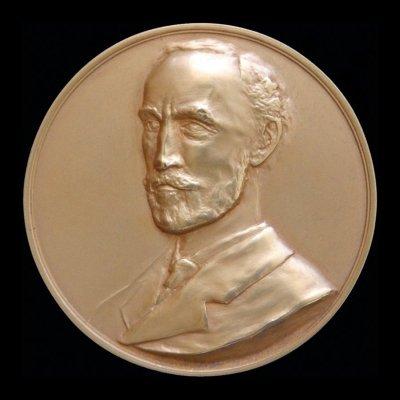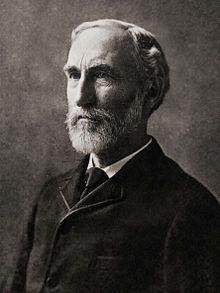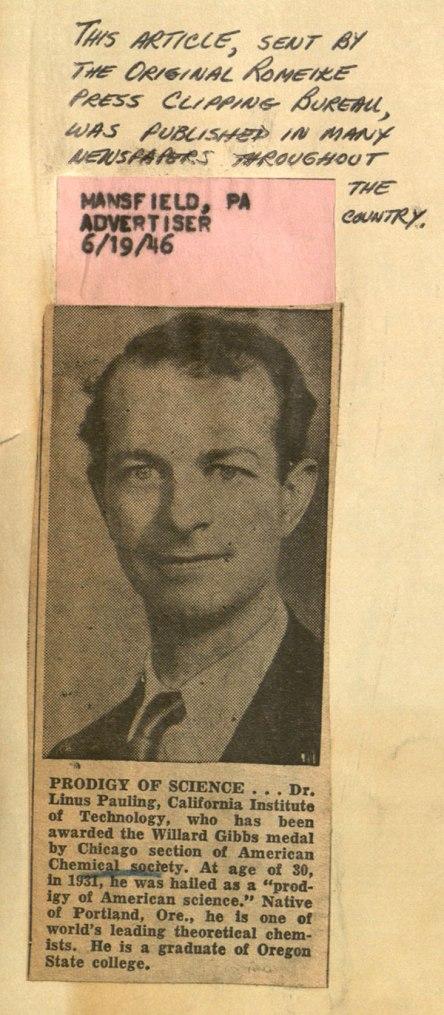
On June 14, 1946, Linus and Ava Helen Pauling traveled to Chicago to attend a dinner recognizing Linus Pauling as the thirty-fifth recipient of the Josiah Willard Gibbs Medal, an award given annually to the most prominent chemists and chemical engineers in the world. The Gibbs Medal was the second major prize bestowed upon Pauling by the American Chemical Society, coming some fifteen years after his receipt of the Irving Langmuir Prize in 1931.
By 1946 Pauling was widely considered to be among the world’s leading theoretical chemists. At just forty-five years old, he had already published more than 150 papers as well as three books. His connection to the American Chemical Society was strong as well. A member since 1920 – he joined before completing his bachelor’s degree in Chemical Engineering at Oregon Agricultural College – Pauling was also a regular contributor to the Journal of the American Chemical Society. So it came as little surprise that the Chicago section chose to honor Pauling with the Gibbs Medal. And in receiving the award, Pauling entered into truly elite company, joining other greats including his Caltech mentor A. A. Noyes (1915), as well as Madame Marie Curie (1921), current ACS President Moses Gomberg (1925), and the namesake of his previous ACS prize, Irving Langmuir (1930).

J. Willard Gibbs
The Gibbs Medal was established in 1910 by William A. Converse, a former chair of the Chicago section of the American Chemical Society. Converse greatly admired Josiah Willard Gibbs and considered him to be “an outstanding example of creativity in the field of scientific investigation.”
Gibbs (1839-1903) was an American mathematical physicist based at Yale University who made important theoretical contributions to multiple scientific disciplines and who helped to form the idea of intersectional science through his studies in physical chemistry. However, many of his contributions were not fully appreciated during his lifetime, and it wasn’t until later that his impact became more broadly recognized. Gibbs is now considered to be the “father of vector analysis” and his most significant work, On the Equilibrium of Heterogeneous Substances, is well-known in the scientific world.
Though he won the medal in 1946, Pauling had actually been nominated several times before. On three occasions (1941, 1942 and 1946), these nominations precluded Pauling from carrying out a duty for which he had been selected: serving as a jury committee member for the Gibbs Award.
Nominations for the award were solicited by the jury committee each September. Once a pool had been compiled, the group would then proceed through several rounds of voting until just one nominee remained. This individual would receive the award from the Chicago section in the following spring. The jury was composed of twelve eminent chemists and chemical engineers enlisted from various regional groups of the American Chemical Society. In the year that Pauling was elected, the chairman of the committee was Dr. Henry R. Spruth.
Interestingly, Pauling’s role in the process of nominating and electing new recipients of the Gibbs Medal did not end after he won. The by-laws governing the selection of recipients state that, in cases where at least eight of the twelve members of the jury cannot arrive at a consensus, “the Chairman shall secure the vote of the past Medalists residing in North America on the two or more remaining candidates” in order to decide on a single recipient. Up until his death in 1994, Pauling was regularly asked to contribute a vote to resolve situations of this type.

At the Chicago dinner, Pauling was presented the Gibbs Medal by W. Albert Noyes, Jr. A photochemist at the University of Rochester, Noyes was also president-elect of the ACS for 1946. In his introduction of Pauling, Noyes recited the long list of accomplishments that had led up to this moment:
…for eminent work and original contributions in chemistry and related scientific fields through the determination of many molecular structures, inter-atomic distances, bond angles and covalent radii of atoms; for quantitation of the classical theory of electronegativity; for extension and application of the resonance principle to chemistry; and for formulation of a framework theory of antibody formation. We honor Linus Pauling!
Pauling then delivered his acceptance address. Having penned multiple drafts in anticipation of the event, Pauling ultimately decided that, since he was being given the award primarily for his contributions to structural chemistry, he would focus mostly on this topic. He began his address by providing a survey of advancements in the field, beginning with Lucretius who, about 2,000 years before, had written that
wine flows easily because its particles are smooth and round and roll easily over one another, whereas the sluggish olive oil hangs back because it is composed of particles more hooked and entangled one with another.
From there, Pauling moved forward through a series of discoveries made by more contemporary scientists, each one building upon the next.
He then arrived at his own work which, by then, had touched on components of physics, mineralogy, chemistry, and biology, but had always followed one common ambition: the desire to truly understand the structure of the molecule. In particular, Pauling had made great use of x-ray diffraction and absorption spectroscopy techniques to advance his studies. He concluded his speech with a call to scientists everywhere that they apply the the theoretical breakthroughs that structural chemists had made in the first half of the twentieth century to the search for solutions to “such great practical problems as those presented by cancer and cardiovascular disease.”
Pauling was a popular pick for the Gibbs Award. Not long after delivering his banquet address, he received a letter from a colleague, Emory University professor William H. Jones, in which he added “my congratulations to the mound of fan mail” and asked “How does it feel to be a Cover Boy for the New Edition?”
Jones wasn’t wrong about the mountain of mail — Pauling received scores of congratulatory letters from colleagues, friends, former students and professors, and random strangers alike. The sentiment expressed by nearly all of these well-wishers was aptly summarized by fellow Gibbs laureate Moses Gomberg, who had presented Pauling with the Langmuir Prize in 1931. “He has grown by leaps and bounds – and is still young!,” he wrote. “My congratulations and wishes to him!”
[Ed Note: This is the 700th post published by the Pauling Blog.]
